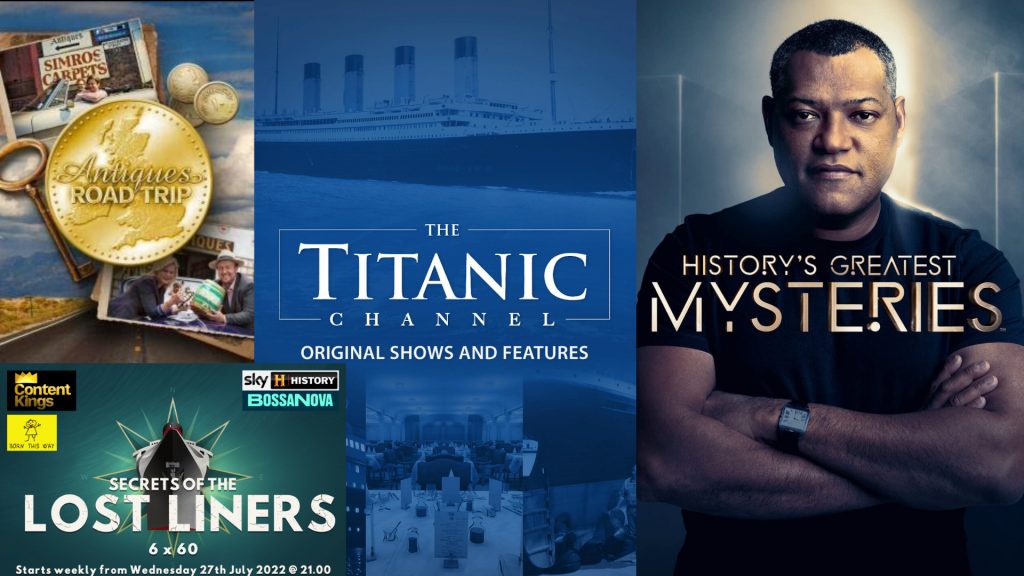About Mark Chirnside
 Mark is a maritime historian based in the United Kingdom, focusing on the great White Star and Cunard liners of the late nineteenth and early twentieth century. You can keep track of his latest articles, books and presentations by subscribing to his Updates blog on this website.
Mark is a maritime historian based in the United Kingdom, focusing on the great White Star and Cunard liners of the late nineteenth and early twentieth century. You can keep track of his latest articles, books and presentations by subscribing to his Updates blog on this website.
He has authored many critically acclaimed books, including Olympic, Titanic & Britannic: An Illustrated History of the ‘Olympic’ Class Ships (2012), The ‘Big Four’ of the White Star Fleet: Celtic, Cedric, Baltic & Adriatic (2016) and Oceanic: White Star’s ‘Ship of the Century’’ (2018) and contributed to many more. His works are ‘extraordinarily researched’ and ‘highly recommended’: ‘Once you see the author’s name on the cover you know it’s worth buying’. He has won no fewer than four ‘Ship of the Month’ awards from Ships Monthly.
I am not exaggerating to say that you are one of the best lecturers I’ve heard…
He appears regularly on television and radio in the United Kingdom and internationally, including ‘Antiques Road Trip’ on BBC 1, the History Channel, RMC Decouverté; BBC Radio Wales and BBC Radio Ulster. Mark also lectures on the subject: ‘I am not exaggerating to say that you are one of the best lecturers I’ve heard…; so articulate, precise and unassuming as you share your in-depth and impeccably referenced knowledge’.
The Media Hub showcases many of Mark’s presentations, podcasts and livestreams:
I have to say that it’s the best Titanic related media I’ve ever heard or seen…your contribution to dispelling the myths is just outstanding. Compelling and fascinating.
He is a graduate in History and Politics from the University of Leicester.

I became interested in Titanic at a young age but the focus of my research is her sister ships Olympic and Britannic. It is only possible to understand Titanic by understanding both her sister ships. Similarly, it is necessary to appreciate the broader context, including other liners of the period. This includes the commercial, engineering, political and social context. I have been researching for more than two decades and this has reinforced my conviction in the primacy of primary sources (material from people who were directly involved in these historical events).
My work has included publishing the first detailed summary of Cunard naval architect Leonard Peskett’s report about travelling on Olympic in 1911. This source was described by Titanic historian Bill Sauder (writing in 2013) as ‘probably the single most valuable document found in the last 25 years’. I ran across it in 2001 and summarised it in The ‘Olympic’ Class Ships: Olympic, Titanic & Britannic (2004 edition) and RMS Olympic: Titanic’s Sister (2004 edition), as well as publishing article extracts in the Titanic Historical Society’s Titanic Commutator. It captured valuable data and provided a great insight into how Cunard, as one of White Star’s key competitors, viewed the new ship.
I corrected a misidentification of one of Britannic’s officers, recognising Alfred Brocklebank as the ship’s second officer (2004). I have also written extensively on Britannic’s size, documenting that she was the same length as her sisters and confirming the reason why she was widened slightly (a decision taken before her keel was laid in November 1911). Michail Michailakis and I acquired the Riddell photograph album (2008) and published a series of previously unknown photographs of Britannic which dated from February 1916. A research paper co-authored with Dr. Paul Lee (2007) explored the evidence about the ship’s name and whether she was intended originally to be called Gigantic.
One of my research areas is on engineering and how progressive changes were made to Olympic, Titanic and Britannic as their designs were refined based on experience. I was the first researcher to publish (2005) evidence that suggested changes to Britannic’s expansion joints were being considered prior to the Titanic disaster, as well as making public new information about refinements to Titanic’s design based on experience with Olympic in January 1912. Contrary to modern day media sensationalism, Olympic and Titanic were fundamentally well designed and built ships, but it was standard practice for shipbuilders to work to a philosophy of continuous improvement. The design process included refinement of propeller design (the three ships had at least five slightly different propeller configurations in the 1911-14 period). I published primary source evidence from Harland & Wolff’s archives which documented Titanic’s propeller configuration for the first time (2008).
I collaborate frequently with other researchers, including research with Oliver Loerscher which suggested the identity of the U-boat which torpedoed Olympic in the final months of the war (2008). Ever the lucky ship, one torpedo struck her amidships but failed to explode. (RMS Olympic: Titanic’s Sister contained many accounts of her war service which were published for the first time, contributing significantly to her social history.)
My work with Sam Halpern has included a focus on Olympic and Titanic’s propelling machinery, engineering procedure and practice, and Titanic’s speed and coal consumption. I published new information about the operation of the combination propelling machinery, including the practice of bringing the turbine online once the reciprocating engines were running at ‘half speed ahead’. The evidence shows very clearly that Titanic was not short of coal on her maiden voyage. Rather, she had an ample supply of coal which included about two days’ coal consumption (at her normal service speed) in reserve.
I have contributed to books such as Titanic: The Ship Magnificent (2008) and Titanic: A Centennial Reappraisal (2012). Other examples of collaboration include two research papers, ‘Titanic: Fire & Ice (Or What You Will)’ (2017) and ‘Time & Again: Titanic’s Final Hours’ (2018) which were published in a single volume as ‘Titanic Solving the Mysteries’ (2019).
On the topic of financial history, I have written extensively about the White Star Line and IMM, documenting that the White Star Line financed construction of the ‘Olympic’ class ships by borrowing the capital, mortgaging their fleet as security. My detailed analysis of Olympic’s profits and losses in her final years of service, including the projections for her planned cruising schedule in the summer of 1935 (2006), shed light on the question of why she was withdrawn from service when she was. She remained in good structural condition and running order but economic circumstances led to her retirement. Another research piece looked at the discussions being held in 1935 for her to be sold and used as a floating hotel (2007).
One of my research articles (2013) looked into the long held belief that the White Star liner Germanic/Homeric, laid down in July 1914, was intended to be a replacement for Titanic. She was actually ordered as an enlarged and improved version of Adriatic for the intermediate Liverpool to New York service. My work into the ‘Big Four’ (2016) and Oceanic (2018) all contributed substantial primary source material which was previously unpublished. The ‘Big Four’ book included extensive primary source accounts of Cedric’s wartime voyages and Celtic’s war service.
Most recently, I’ve published research into Willem Piek’s crossing on Olympic in December 1911 and the notes he took for the Holland America Line, which would inform the specification of their new liner Statendam. Related to this was an account of Thomas Andrews’ visit to Rotterdam that same month to discuss the new liner’s design proposals (2024). Time and time again, the Dutch shipping company wanted one of Olympic’s features incorporated into the design of their new ship.
There is undoubtedly a lot more still to learn!

